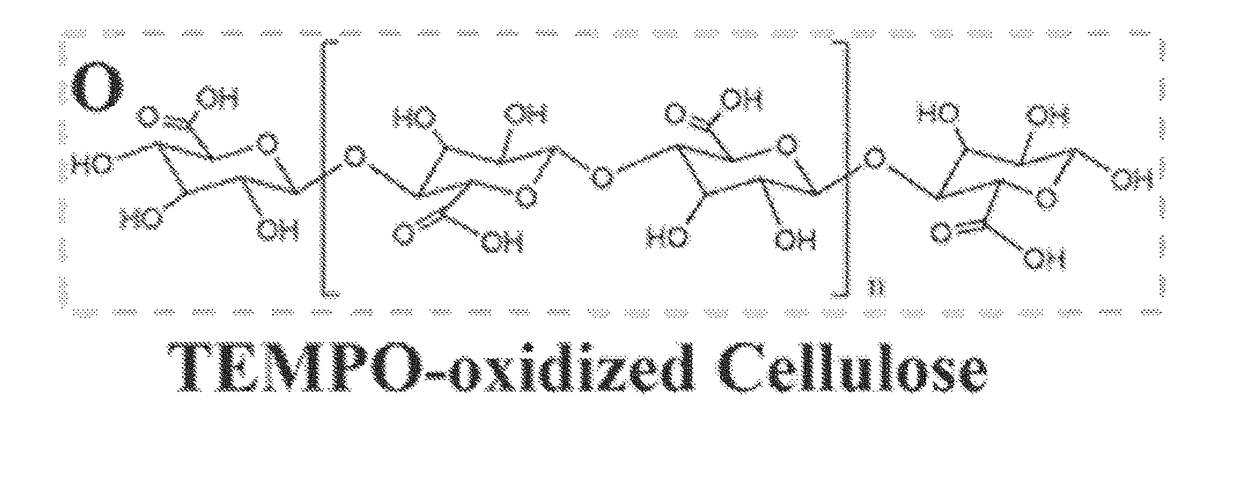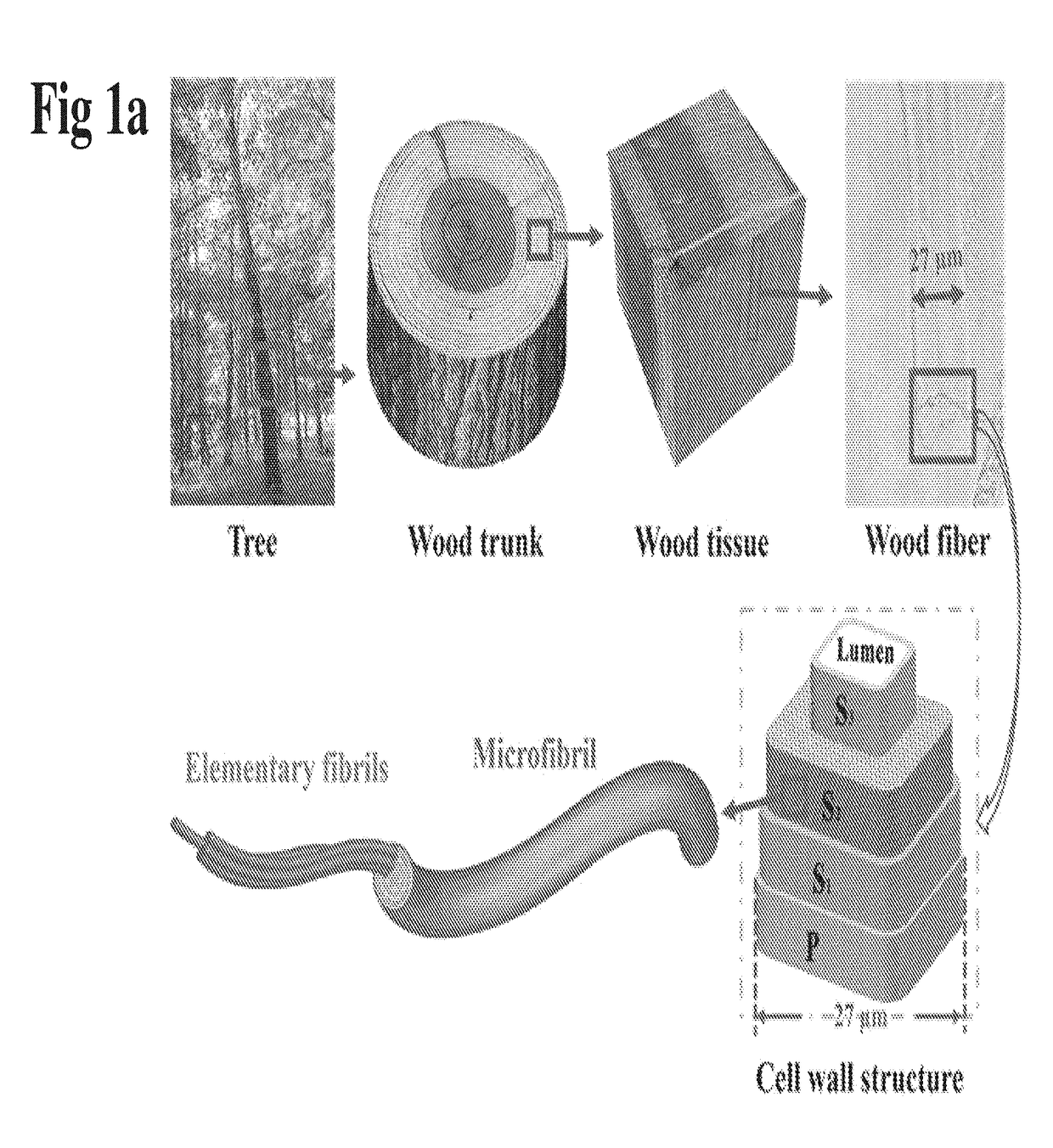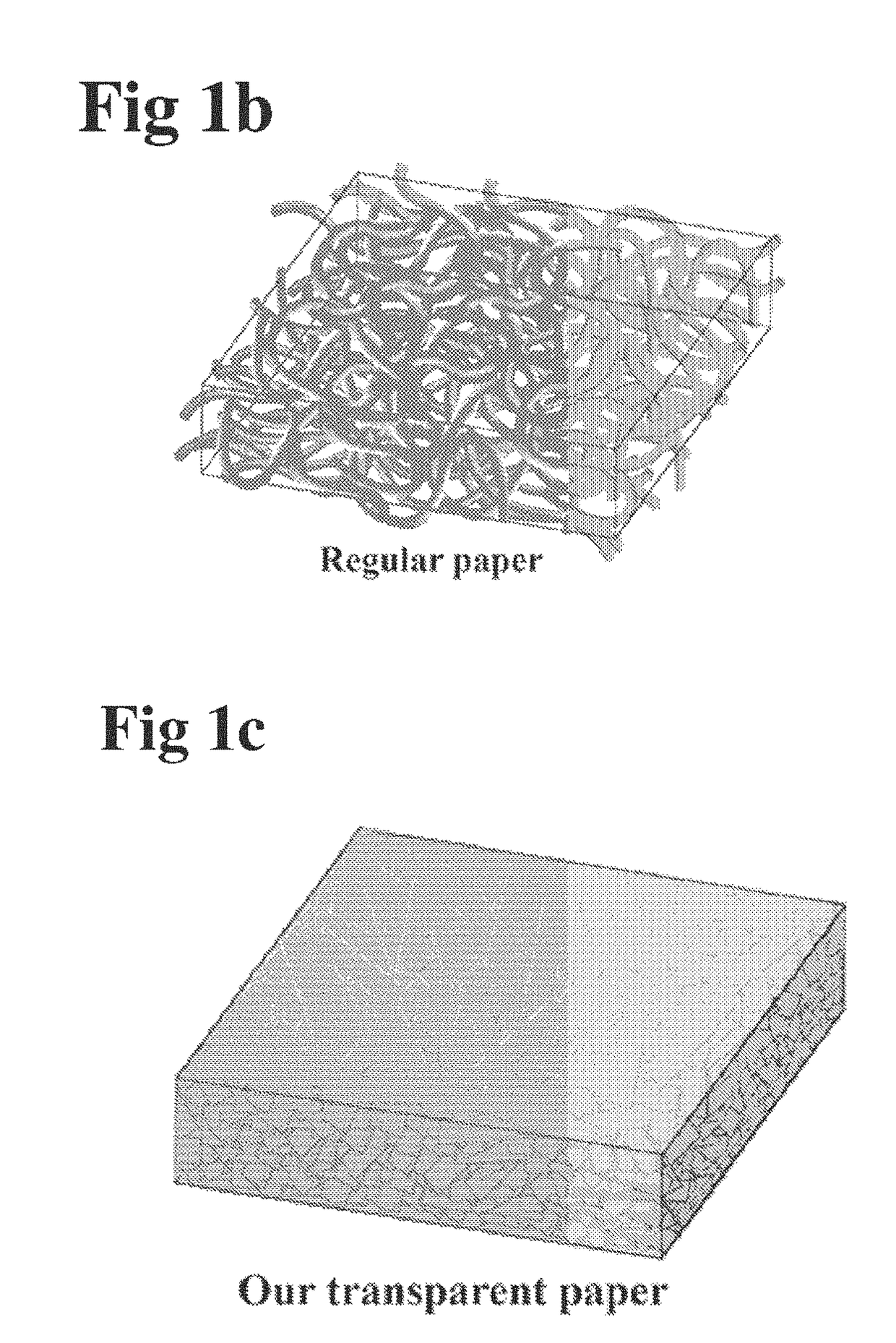Super clear cellulose paper
a cellulose paper, super clear technology, applied in the direction of cellulose pulp after-treatment modification, thermal-pv hybrid energy generation, sustainable buildings, etc., can solve the problems of large energy consumption of sole mechanical processes, and large energy consumption of energy consumption of mechanical processes, etc., to achieve ultra-high optical transparency, high packing density, and ultra-high optical haze
- Summary
- Abstract
- Description
- Claims
- Application Information
AI Technical Summary
Benefits of technology
Problems solved by technology
Method used
Image
Examples
Embodiment Construction
[0082]The invention relates to a method of making a transparent paper substrate made of earth-abundant wood fibers that simultaneously achieves an ultra-high transmittance (˜96%) and ultra-high optical haze (˜60%), and its optimal application on the solar cells with a PCE enhancement of 10% by a simple lamination process. The modified wood pulp with high fragment content and fewer hollow structures lead to a higher packing density, which dramatically increases both the optical transmittance and mechanical strength of our transparent paper compared to regular paper. The transparent paper demonstrates a much higher optical transmittance than nanopaper made of nanoscale fibers while using much less energy and time to process paper with a similar thickness. Such low-cost, highly transparent, and high haze paper can be utilized as an excellent film to enhance light-trapping properties for photovoltaic applications such as solar panel, solar roof, or solar windows. Transparent paper is ma...
PUM
| Property | Measurement | Unit |
|---|---|---|
| optical haze | aaaaa | aaaaa |
| wt % | aaaaa | aaaaa |
| transmittance | aaaaa | aaaaa |
Abstract
Description
Claims
Application Information
 Login to View More
Login to View More - R&D
- Intellectual Property
- Life Sciences
- Materials
- Tech Scout
- Unparalleled Data Quality
- Higher Quality Content
- 60% Fewer Hallucinations
Browse by: Latest US Patents, China's latest patents, Technical Efficacy Thesaurus, Application Domain, Technology Topic, Popular Technical Reports.
© 2025 PatSnap. All rights reserved.Legal|Privacy policy|Modern Slavery Act Transparency Statement|Sitemap|About US| Contact US: help@patsnap.com



